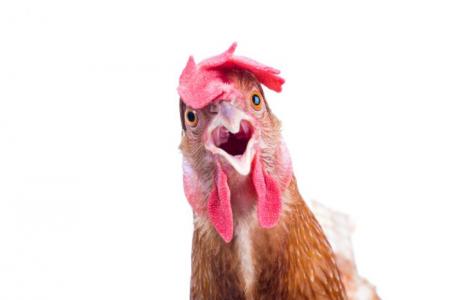HWN Jobs
- AFRIPHARM JOBS
- MATERNAL AND NEONATAL HEALTH (MNH) JOBS
- FEDERAL NEUROPSYCHIATRIC HOSPITAL SOKOTO JOBS
- MALARIA CONSORTIUM (SEPTEMBER) JOBS
- JHPIEGO (JOHNS HOPKINS UNIVERSITY) JOBS
HWN Blogs
- Classical heart healthy foods on HWN BLOGS
- Classical Warning Signs When The Human Liver Begins To Fail on HWN BLOGS
- Myths About Hygiene, Soaps, Germs, Sweat and Smell on HWN BLOGS
- Hernia does not heal on its own on HWN BLOGS
- Classical Essential Oils That Improves Focus Cum Memory on HWN BLOGS
news - Chickens And Their Protection Against Malaria on HWN RESEARCH back to all News
Chickens And Their Protection Against Malaria on HWN RESEARCH

Study co-author Rickard Ignell, of the Swedish University of Agricultural Sciences, and colleagues publish their findings in the MJ.
Malaria is a disease most commonly transmitted through the bites of Anopheles mosquitoes infected with Plasmodium parasites.
According to the World Health Organization (WHO), there were around 214 million malaria cases across the globe last year and approximately 438,000 deaths from the disease.
Sub-Saharan Africa has the highest malaria burden; the region accounted for 89 percent of malaria cases and 91 percent of malaria deaths in 2015.
Current strategies to protect against malaria in high-risk areas include the use of insecticides and mosquito nets, but while such strategies have reduced transmission of the disease, they are not enough.
People in sub-Saharan Africa have suffered considerably under the burden of malaria over an extended period of time, and mosquitoes are becoming increasingly physiologically resistant to pesticides while also changing their feeding habits, for example, by moving from indoors to outdoors. For this reason, there is a need to develop novel control methods," says Ignell.
Now, he and his colleagues suggest chickens may pave the way for such a method.
Significantly fewer mosquitoes found on traps laced with chicken odors
Mosquitoes primarily use their sense of smell in order to select suitable host species.
With this in mind, the researchers set out to investigate what species the mosquito Anopheles arabiensis - a common malaria vector in sub-Saharan Africa - prefers based on the odors emitted.
Fast facts about malaria:
Around 3.2 billion people worldwide are at risk of malaria
In high transmission areas, children under the age of 5 years are at greatest risk for malaria
Worldwide, malaria mortality rates have fallen by 60 percent since 2000.
Firstly, the team gathered data on potential host species residing in three villages in Ethiopia: Wama Kusaye, Baka-Bora, and Machara. The possible host species included domestic animals - such as cattle and chickens - and humans.
Additionally, over a 5-day period, the researchers collected blood-fed A. arabiensis mosquitoes from inside and outside houses in the three villages and analyzed the sources of the blood, in order to pinpoint which species they had fed on.
As expected, the team found that the mosquitoes have a high preference for human blood over animal blood when looking for host species indoors. When outdoors, the mosquitoes feed on cattle, goats, and sheep, but the researchers found they avoid chickens both indoors and outdoors.
Next, the researchers collected an array of samples from potential host and non-host species, including hair, wool, and feathers, and assessed the odor compounds they contained.
The team then applied the identified odor compounds to mosquito traps to see whether they attracted or repelled the insects. The traps were installed in 11 houses in one of the villages for 11 days, and in each of these houses, one person slept under a bed net that had not been treated with mosquito repellant.
Compared with traps that had been laced with odor compounds from cattle and other potential host species, the researchers found significantly fewer mosquitoes had been caught in traps laced with odor compounds from chicken feathers.
What is more, the team found that placing live chickens next to a mosquito trap also appeared to act as a mosquito repellant.
Commenting on what their findings show, the researchers say:
This study demonstrates that NHVs [non-host volatiles] have the potential to afford protection to people at risk of contracting a mosquito-vectored disease, in combination with established control programs.
They note that future research should focus on using the isolated chicken odors to formulate a mosquito-repelling product that meets WHO guidelines.
With the increasing reports on insecticide resistance among disease vectors, it is incumbent on the international malaria community to embrace these novel control methods and products, the team adds.
Source: MJ, HWN AFRICA, MNT.
: 2016-07-21 19:53:14 | : 1838
HWN News
- First Polish infant to survive on extreme dialysis on HWN MEDICAL MIRACLES
- Drug resistant tuberculosis end game on HWN INSIGHTS
- Too many women opting for caesarean sections (CS) to give birth on HWN SEX EDU
- The intelligent, strong and fearless Nurse that conquered Ebola on HWN ARCHIVE
- Medhi Benatia, down with injury on HWN SPORTS






